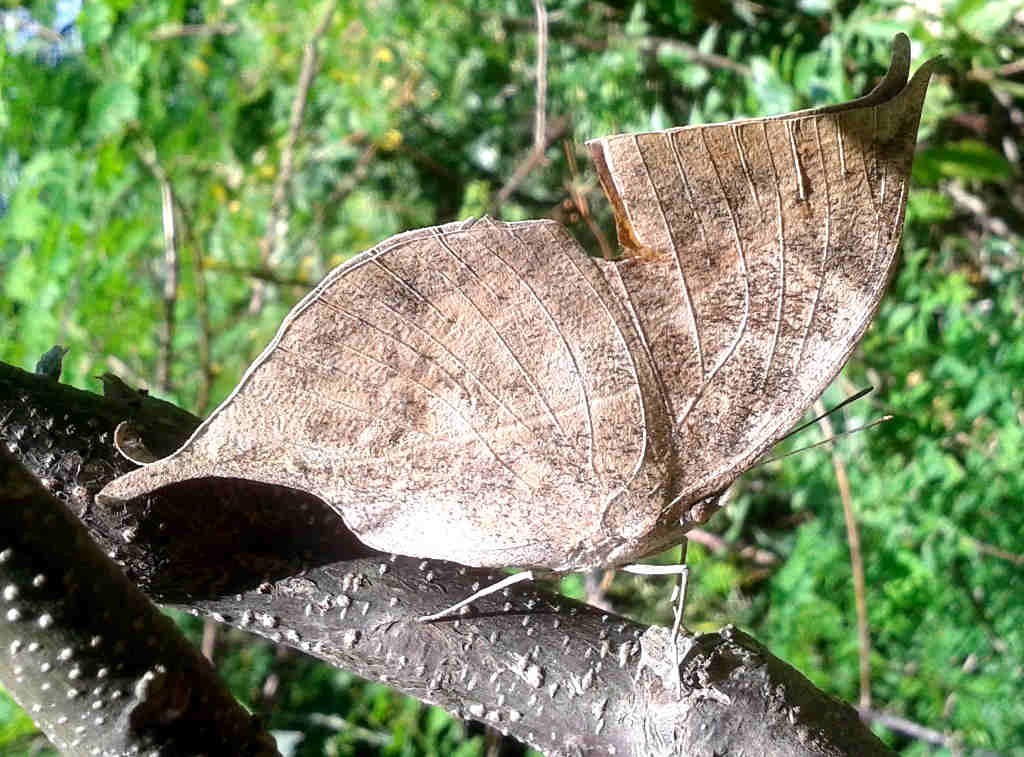
Kallima inachus (Orange oakleaf butterfly)
ma inachus) is one of the most remarkable and visually deceptive butterflies found in the Great Himalayan National Park (GHNP). Known for its incredible camouflage, this butterfly mimics a dry leaf when its wings are closed, making it nearly invisible among the forest floor’s foliage. Its bright orange and deep blue upper wings, however, tell a very different story when it takes flight.
Appearance and Camouflage
The Orange Oakleaf butterfly displays a stunning contrast in appearance. When at rest, its folded wings resemble a dry, crumpled leaf—complete with a midrib and dark venation. This mimicry protects it from predators by blending seamlessly into its surroundings. When its wings open, they reveal brilliant orange and blue hues, serving both as a defense mechanism and a visual marvel.
Habitat in GHNP
In GHNP, Kallima inachus is commonly found in subtropical and temperate forest zones, especially in areas with dense undergrowth and ample leaf litter. It thrives in altitudes ranging from 500 to 2000 meters and is often spotted near riverbanks, shaded forest trails, and damp patches where it feeds on fermenting fruit and tree sap.
| Common Name | Orange Oakleaf |
| Scientific name | Kallima inachus |
| Family | Nymphalidae |
| Description | It is one of the most fascinating butterflies seen in Great Himalayan National Park. It looks like a dry leaf and is easily camouflaged on the ground or on the tree trunk. It has a brilliant orange upper side. It is fond of overripe fruit, a rather wary butterfly that is difficult to approach. It is mostly seen in the Great Himalayan National Park. The caterpillar in the final instar is chocolate brown in colour with many spikes on it. It is a strong flier and flies among the undergrowth and along forest streams. It prefers dense hills with good rainfall and found in the hills up to 1,800m. |
Behavior and Lifecycle
Unlike many butterflies, the Orange Oakleaf is not drawn to flowers. Instead, it is attracted to rotting fruit and tree sap. It has a rapid and erratic flight, making it difficult to track. The species breeds during the monsoon and post-monsoon seasons. Females lay eggs on host plants like the Strobilanthes species, and the larvae feed on these leaves until pupation.
Ecological Importance in GHNP
The Orange Oakleaf plays a key role in the GHNP ecosystem as a pollinator and as part of the food chain. Its presence also signifies healthy forest habitats, as it relies on dense vegetation and leaf litter for survival. The species is an excellent example of evolutionary adaptation and is often cited in biodiversity studies related to camouflage and mimicry.
Conservation Status
While not endangered, the Orange Oakleaf depends on undisturbed forest habitats. Continued conservation efforts in GHNP are essential for preserving the rich biodiversity that sustains species like this unique butterfly.



